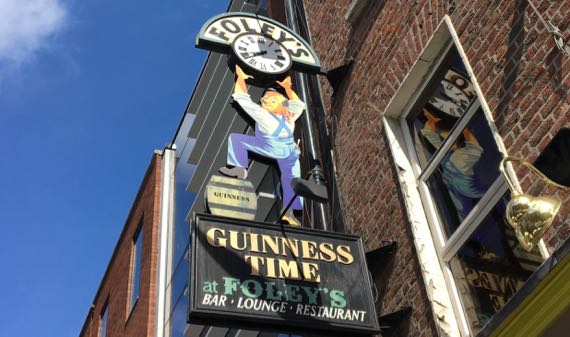
There’s a lot of new in central Dublin, but plenty of retro in original form. Loved this sign, and its reflection
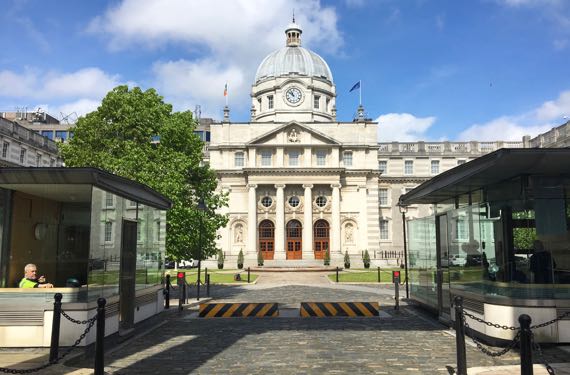
Dublin has hosted many forms of national and pseudo-national government, much of it preserved in the names of buildings. This one is still in use. It holds the office of the Taoiseach and his staff. Taoiseach is an Irish word; the guards out front said we should say tee-sachk—a bit guttural at the end, although they acknowledged that they were from different parts of the country and pronounced the word a bit differently.
The Taoiseach is the leader of Ireland, its head of government. Sometimes the position is translated as prime minister, but even in Britain he’s the Taoiseach. In Irish, the word means leader or chieftain. Ireland has an upper and a lower house of Oireachtas (essentially, parliament). The lower house, or Dáil, elects the Taoiseach. The Taoiseach can dissolve the Dáil at any time, although the term of office of Dáil members is five years if that does not happen. Think you’ve got it? There’s also a President, elected every seven years. These variable terms of office must make political maneuvering very complicated.
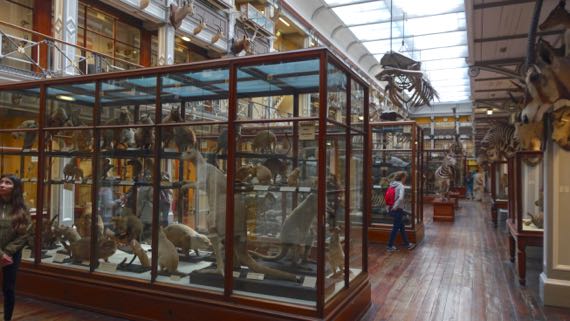
Our next stop was the Dead Zoo, the retro museum of natural history. It’s crammed in a lovely historic building, with those large glass display cases holding often unnatural assortments of critters. We could only visit the lower two floors; the upper two floors have insufficient fire escapes for public safety.
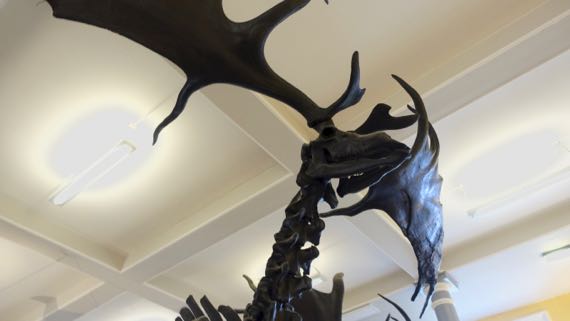
This was labeled Giant Irish Deer. Giant I get. The bones are black because they were recovered from peat—peat the anaerobic preserver of organic remains. The antlers are massive. The species ranged across the northlands of Europe/Asia, but for years the Europeans knew the Irish specimens…so the modifier was added, inaccurately.
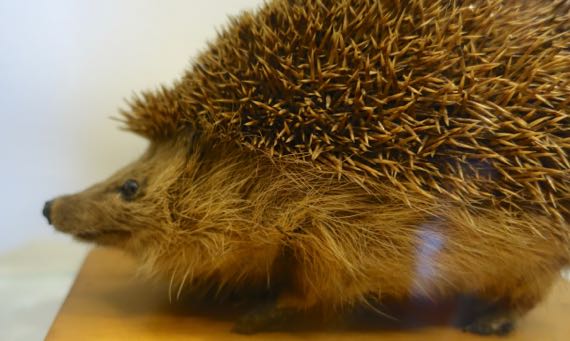
You may have read about hedgehogs or seen a shoe brush/cleaner shaped to imitate one. This is an…uhem, real one. Stuffed and real. Those upper bristles are stiff-looking. Nearby on this wall was a sturgeon. All sturgeon in British waters are technically the property of the king—or this was true when the yellowing label was made.
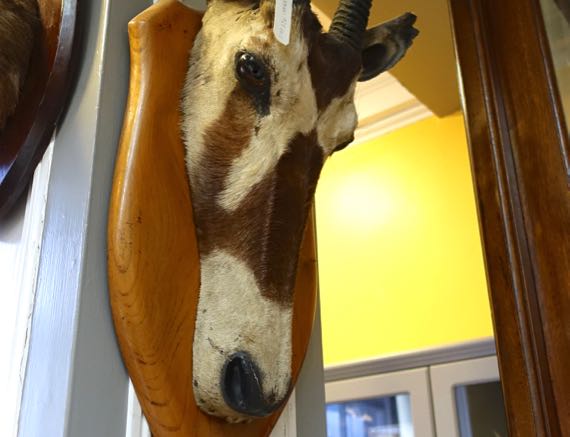
I do not remember seeing this style of taxidermy mammal-head mount before. The flat profile strikes me as…very odd. This specimen was labeled gemsbok. You may know it as an oryx. Especially if you do crosswords/play Scrabble. I just read that thousands of them live within the boundaries of the White Sands Missile Range military installation in New Mexico. Invasive species?
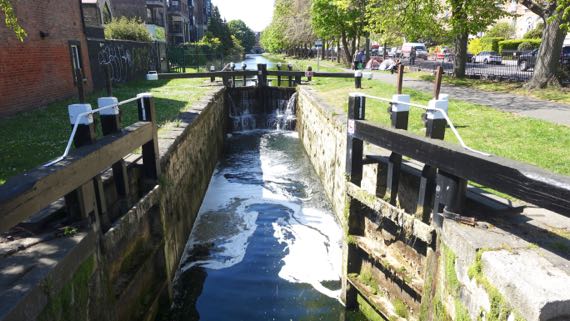
Back out in the sunshine, we strolled along the Grand Canal. So pretty. Mallards feeding. People crossing the locks. Birds chirping. People seated on benches.
This canal has 43 locks, five of them doubles. I like locks. Construction of the canal began in 1756; and it was not until 1804 that the first boat was able to traverse the entire length. This is lock C3. The water level changes quite a bit, no?
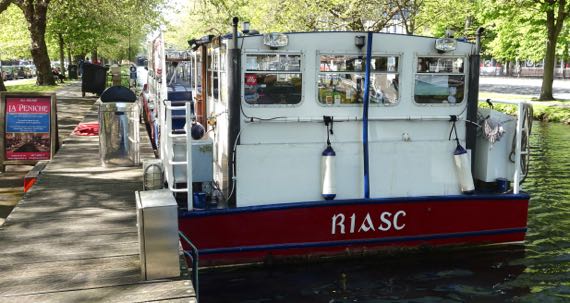
Here’s a party canal boat, meekly waiting dockside for the next group of revelers.
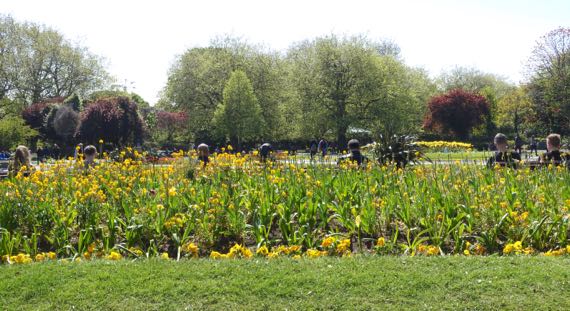
We stopped in the sunshine in St Stephen’s Green, a lovely park. The flower bed across from us was a long, low ridge, reducing the people on the next row of benches to heads above the yellow flowers (canola? and pansies).
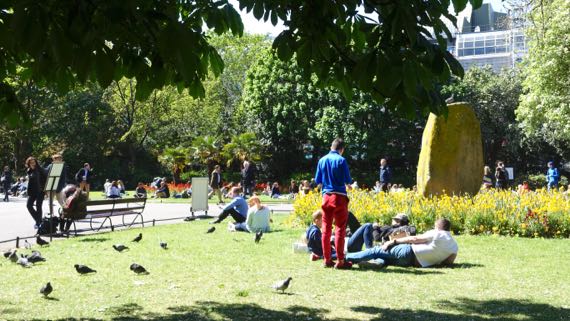
And here by our exit gate, we found pigeons and picnickers, cooing and chatting.
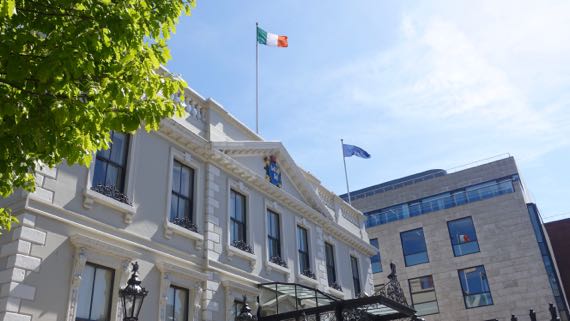
This is Mansion House. Ireland’s First Dáil convened from 1919–1921, subsequent to the standard election in 1918 for Irish members of the English Parliament; that election was in mid-December. The political party Sinn Féin won the vast majority of the 105 Irish seats; Sinn Féin vowed radical means of achieving Irish self-rule. They became known for violence, but they also tried political negotiations.
Instead of going to London, all MPs were invited to convene the First Dáil, a major move in the shift to self-rule. They met here, in the round room of Mansion House, which is set back from the front wing you see here. That first day the Dáil ratified the 1916 Proclamation of the Irish Republic we saw the other day, proclaimed the Irish Declaration of Independence, and adopted the Dáil Constitution.
Mansion House had been the official residence of Dublin’s Lord Mayor since 1715. The Lord Mayor in 1919 was Laurence O’Neill, also an independent MP. Thus, the new national government and the city government of Dublin overlapped in membership and official space. Mansion House likely felt more Irish and independent of England than many spaces the First Dáil could have met. And safer.